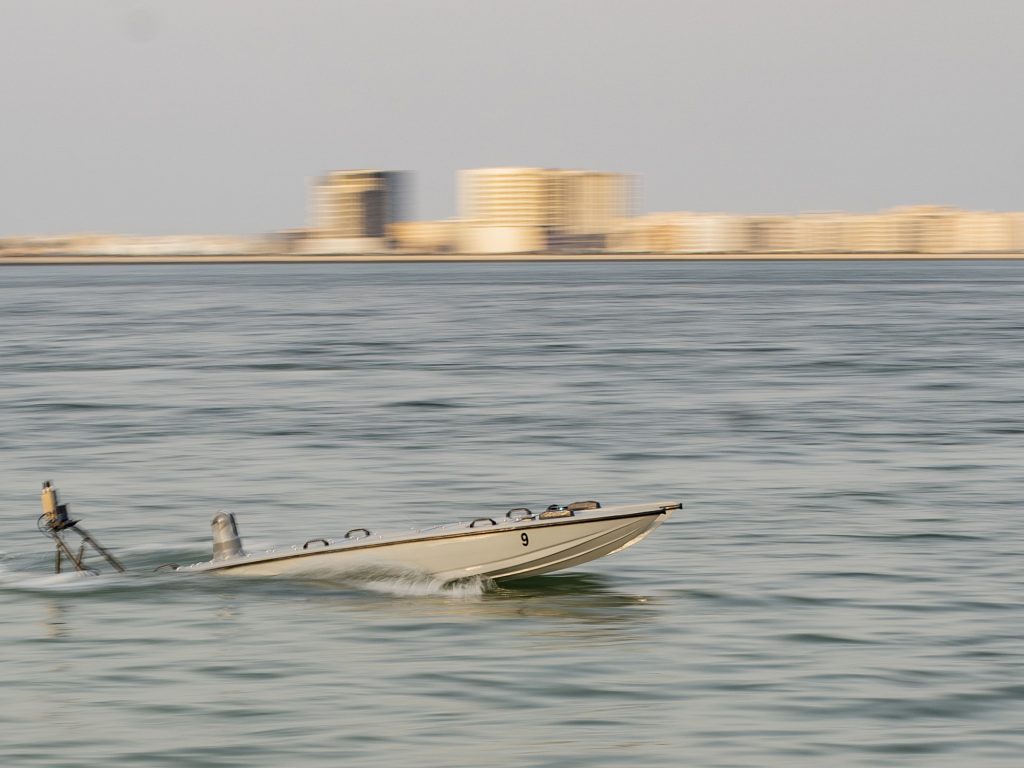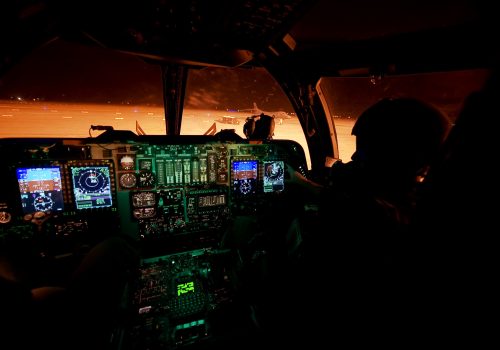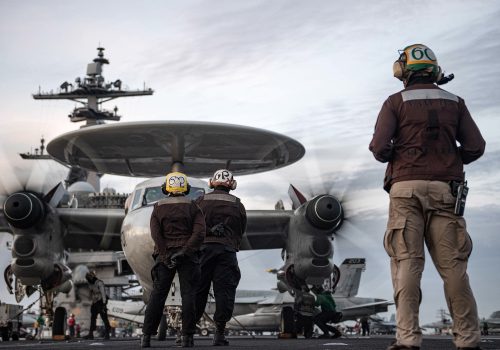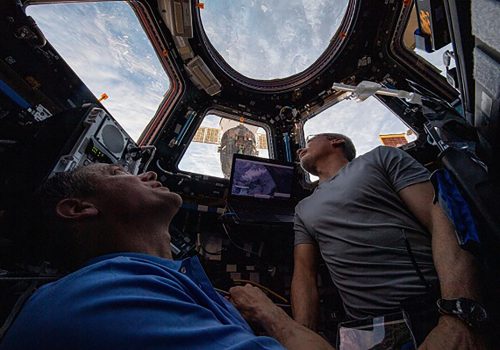As technological innovations transform the maritime industry, a new region is trialing the US Navy’s latest answer to modern warfare challenges: autonomous systems. But achieving the full potential of unmanned surface vehicles (USVs) will require careful integration.
Navies are beginning to explore USVs as force multipliers and domain awareness tools. This is particularly true with US Central Command (CENTCOM), which operates in the Middle East and Central and South Asia. There, Task Force 59—established in September 2021—has been experimenting with USVs and artificial intelligence (AI). In partnership with academia, industry, and partner countries, Task Force 59 has explored the technologies’ potential uses for responding to various complex security challenges and for giving the US military an edge. Today, Task Force 59 focuses on further increasing maritime domain awareness in the Gulf, with plans to have one hundred USVs available to keep tabs on Iranian activity by the end of 2023.
But now, the Navy has another testbed for USVs at its disposal; that’s because in April, the Navy announced it would bring this critical technology to Central and South America to help the Navy do more with its limited resources in the waters under the responsibility of US Southern Command (SOUTHCOM).
While Task Force 59 currently has 2.5 million square miles of water under its purview, SOUTHCOM is responsible for more than six times that amount, with sixteen million square miles of water—and with substantially fewer military assets. Without an obvious terrorist threat or great-power competitor in the region, SOUTHCOM has historically not been allocated a robust force. This is unlikely to change as the US Navy continues to face resource constraints worldwide and as higher-churn regions like the Indo-Pacific remain the priority. The larger space and fewer resources indicate that it will be more challenging for SOUTHCOM to integrate the tech.
SOUTHCOM stands to benefit from a USV presence. The Navy’s 4th Fleet (C4F)—which dedicates most of its surface assets to supporting SOUTHCOM in reducing the regional flow of illicit drugs—recently saw missions expand to include combating the threat of illegal, unreported, and unregulated fishing, which is linked to labor abuses and other transnational crimes. In recent years, there has been a significant uptick in reports of criminals using fishing vessels to traffic drugs, weapons, and humans. While SOUTHCOM regularly partners with local navies and law enforcement entities, these mission sets require a persistent awareness beyond what the current force composition can provide. USVs, with their lower cost and minimal manning requirements, have the potential to be a transformative technology in SOUTHCOM’s underresourced waterways.
SOUTHCOM’s low-threat nature makes C4F an optimal candidate for testing USV capabilities—and for putting the vessels into operation. Yet, to capitalize on the value of this technology, the US military will have to plan thoughtfully, coordinate extensively, and work through plenty of trial and error to overcome the following challenges.
First, while USVs have the advantage of being relatively inconspicuous and able to transit through shallow and densely populated waters, they alone cannot search or seize vessels suspected of participating in illicit activities. Under maritime law, a US Coast Guard legal detachment must be present to search or seize. Thus, C4F’s primary mission will still require Grey Hull or Military Sealift Command ships. USVs cannot conduct these critical interdictions alone and will still rely on traditional US Navy assets that are hard to come by. USVs can and should, however, be used to augment traditional surface operations because they decrease risk and increase the value proposition of conventional assets—typically littoral combat ships and destroyers—assigned to the region.
The Navy should employ USVs in a way that allows traditional surface assets to dedicate all of their time in theater to conducting interdictions rather than searching for or attempting to identify nefarious actors. C4F should position USVs along known smuggling and trafficking routes to obtain atmospheric and oceanographic data, determine typical traffic patterns, and identify contacts of interest. USVs should also be deployed with or ahead of traditional surface assets to extend the reach of the Navy’s sensors and improve their maritime domain awareness.
A second hurdle to integrating USVs into the command architecture is a lack of consistent and reliable funding. While the Navy is keen to use the waters of Central and South America as a testbed for USVs and AI, the area remains a low priority, meaning C4F is unlikely to receive sufficient additional funding to maintain a long-term and continuous presence in the region—such a presence is required to succeed in SOUTHCOM’s counter-narcotic and illegal, unreported, and unregulated fishing missions.
USVs, however, have a big advantage worth considering in addressing the funding challenge: The vessels are more cost-effective than traditional naval surface assets. In addition to being cheaper to construct, most USVs are contractor-owned, contractor-operated (COCO)—meaning that industry partners lead on manufacturing and operations, providing a service rather than a product to the US military. This structure allows for cost-sharing and cuts down on the Navy’s initial investment and maintenance expenditures. While the COCO model offers flexibility—it allows for faster customizations and upgrades—it runs a higher risk of leading to issues caused by contract termination and vessel transitions. For example, under the COCO model, keeping a USV on station longer than contractually obligated (which is not uncommon for a naval surface asset) would require legal action and renegotiation. The continued availability of the asset would be subject to contractor availability and could have considerable price implications, creating gaps in operational continuity.
To ensure continuous funding for these assets, C4F needs a deliberate and strategic plan for its utilization of USVs; in that plan, C4F should set criteria to measure the effectiveness of USVs and outline how it will communicate about the utilization of this capability in the future. It should construct this plan now while the enthusiasm for testing and operationalizing USVs in the region exists.
Third, by employing USVs, the US Navy will expand the data pool at its disposal; while this has the potential to enhance maritime domain awareness, the Navy also faces a new challenge of integrating USVs into the existing data management architecture and determining how to disseminate actionable information. Video footage from dozens of USVs may overwhelm C4F’s current processing capability. Computer algorithms could help sift through videos to identify nefarious activity. However, the Navy is also still integrating AI and will need to solve its data management issues in the short term.
In gearing up to face this challenge, C4F should lobby for additional intelligence manning for the fleet staff; at the branch level, the Navy must continue to work to identify a single knowledge management platform for autonomous systems data. Task Force 59 has echoed this need, explaining that the desired platform would resemble a “digital ocean” in which every partner and sensor (everything from ships and buoys to satellites) collecting data adds the information to an “intelligent synthesis of around-the-clock inputs.” Only this seamless integration will ensure the data from a USV following a vessel that moves from one fleet-controlled area to another seamlessly reaches action officers at all units.
USVs are a low-cost way to expand the US Navy’s footprint and signal to partner countries that the United States cares about SOUTHCOM. USVs are a promising technology, but they must be deliberately and carefully integrated into C4F to achieve their full potential.
Lieutenant Sophia Costes is a Navy surface warfare officer with six years of experience deploying on surface vessels USS The Sullivans (DDG 68) and USS Paul Ignatius (DDG 117) and serving on the staff at Destroyer Squadron 40. Costes is also pursuing her master’s degree in public policy at the Harvard Kennedy School of Government.
Lieutenant Commander Grace Jones is a Navy reserve intelligence officer with ten years of experience supporting special operations and conducting strategic-level analysis. Jones is also pursuing her master’s degree in public policy at the Harvard Kennedy School of Government.
The opinions expressed are those of the authors and do not represent the official views or policies of the Department of Defense, the Department of the Navy, or US Southern Command.
This article is part of the 21st Century Security Project by the Scowcroft Center’s Forward Defense program with financial support from Lockheed Martin.
Further reading
Thu, Jun 8, 2023
Operationalizing integrated deterrence: Applying joint force targeting across the competition continuum
Report By
General James E. Cartwright, Lieutenant Colonel Justin M. Conelli, Clementine G. Starling, and Julia Siegel advance a framework for operationalizing integrated deterrence.
Tue, May 16, 2023
Money talks: Here’s what the president’s budget says about the US military edge
New Atlanticist By Clementine G. Starling-Daniels, Marek Jestrab, Julia Siegel
Biden's $886-billion request for defense-related activities may be insufficient to meet the moment.
Thu, Jan 12, 2023
How the US and its allies should respond to evolving space threats
New Atlanticist By
Adversaries are changing the ways they disrupt or destroy US and allied space operations. Our experts give their sense of the latest challenges to security.
Image: Marines assigned to the All Domain Reconnaissance Detachment, 11th Marine Expeditionary Unit (MEU), operate a MANTAS T12 unmanned surface vessel during training with Task Force 59 at Naval Support Activity Bahrain on October 28, 2021. Photo via the US Marine Corps by Sgt. Seth Rosenberg/Released.



